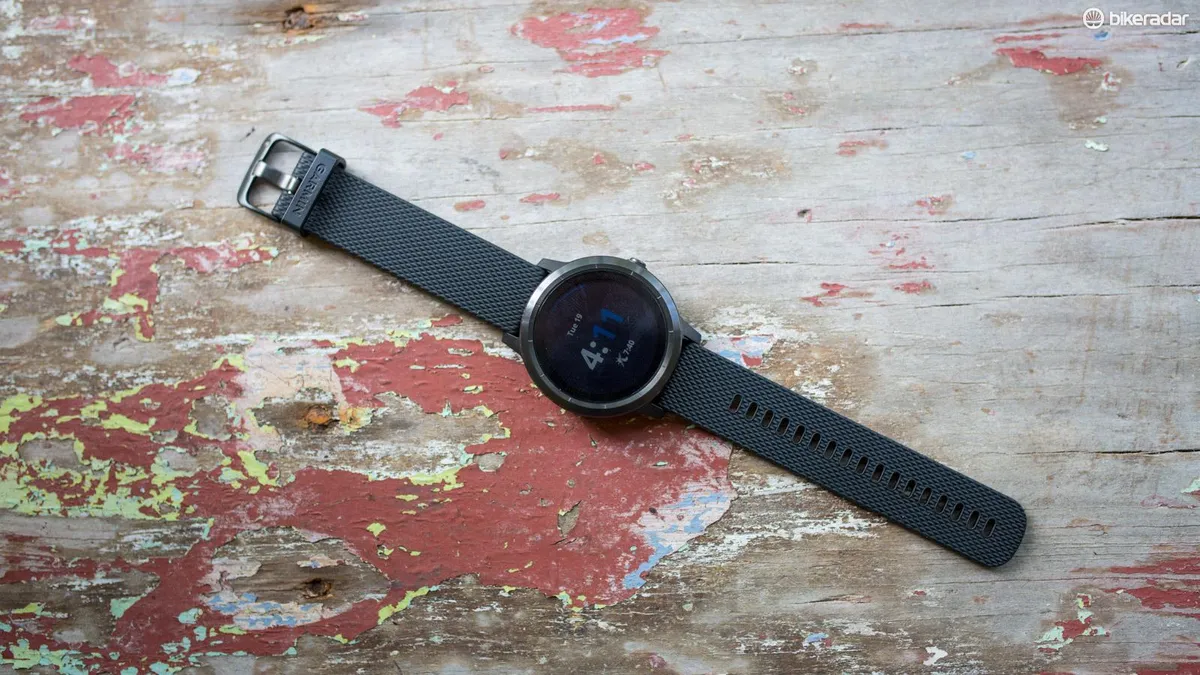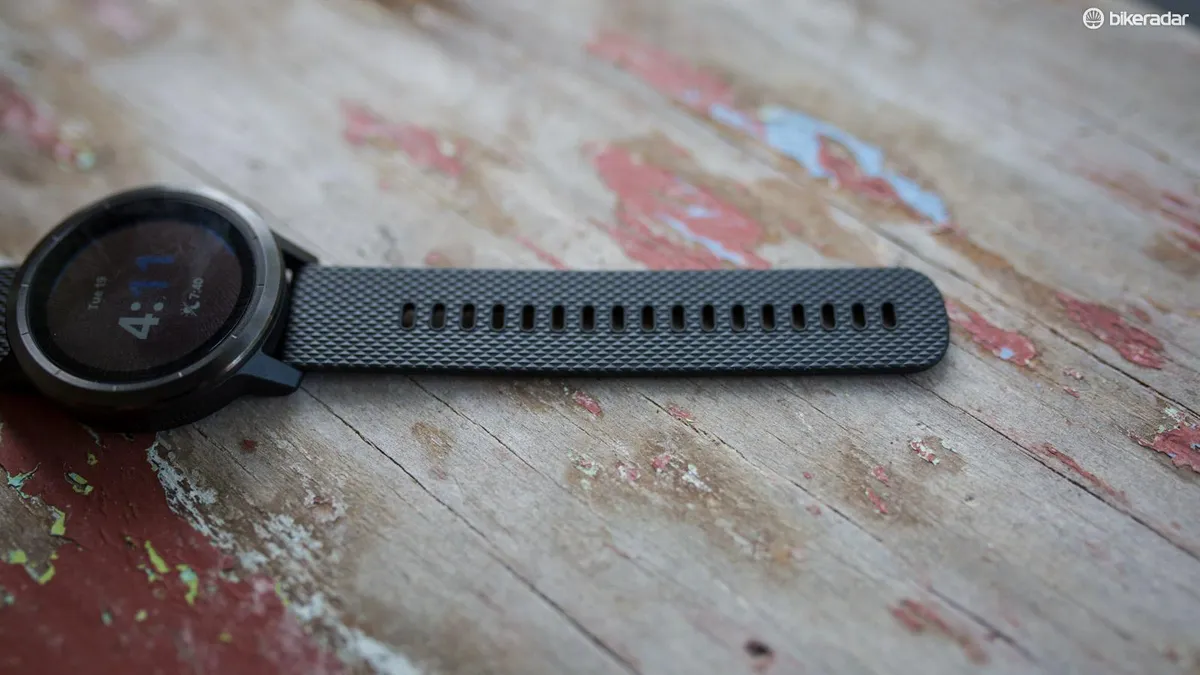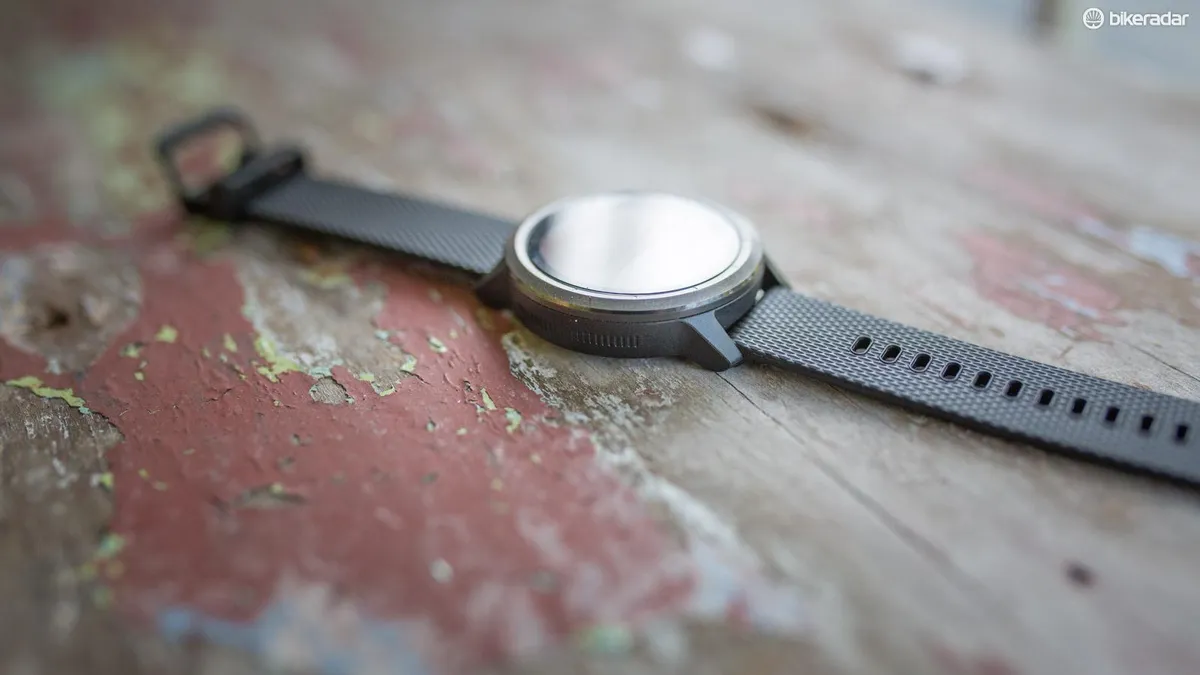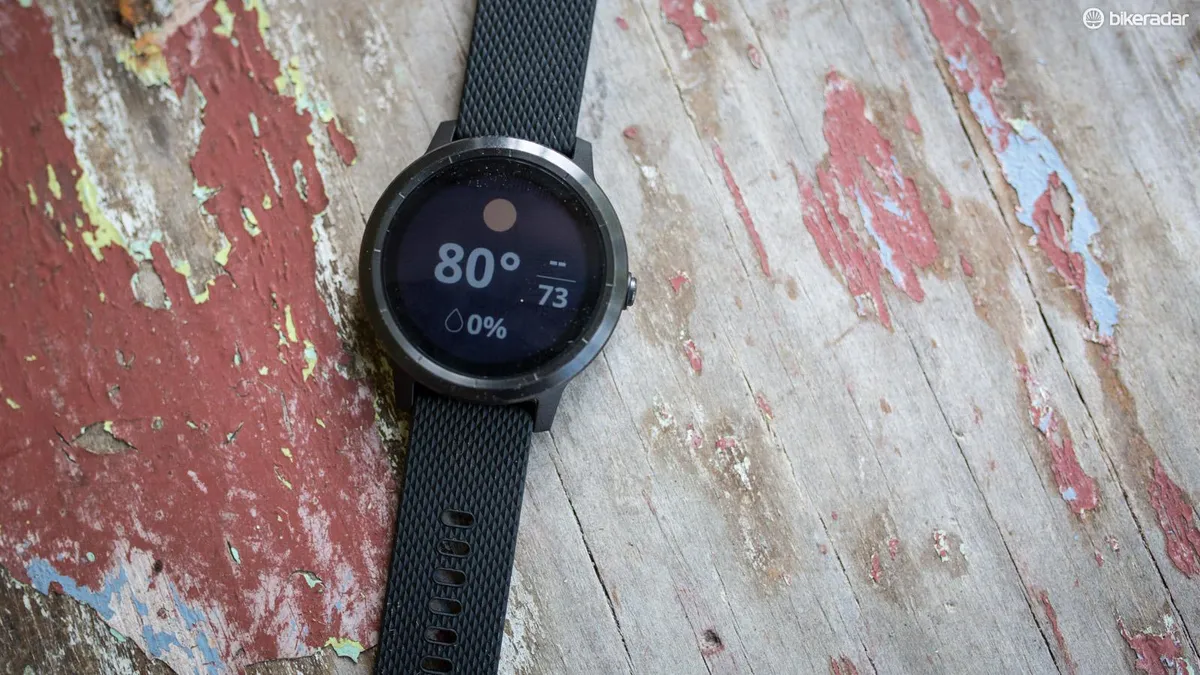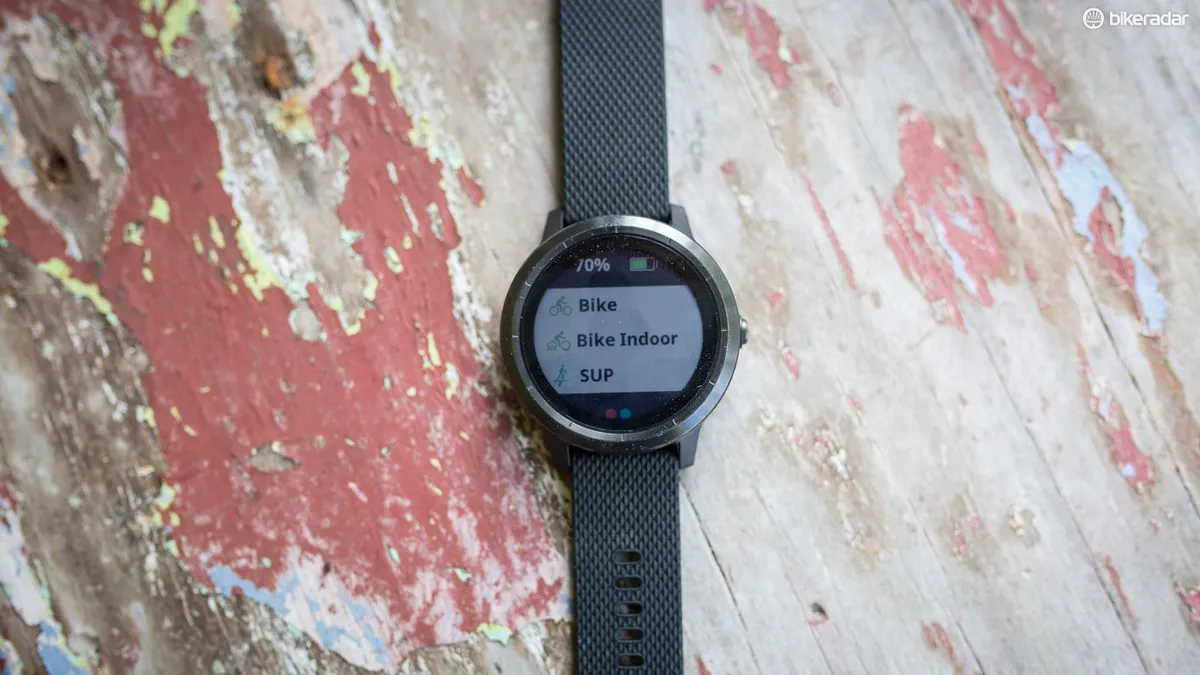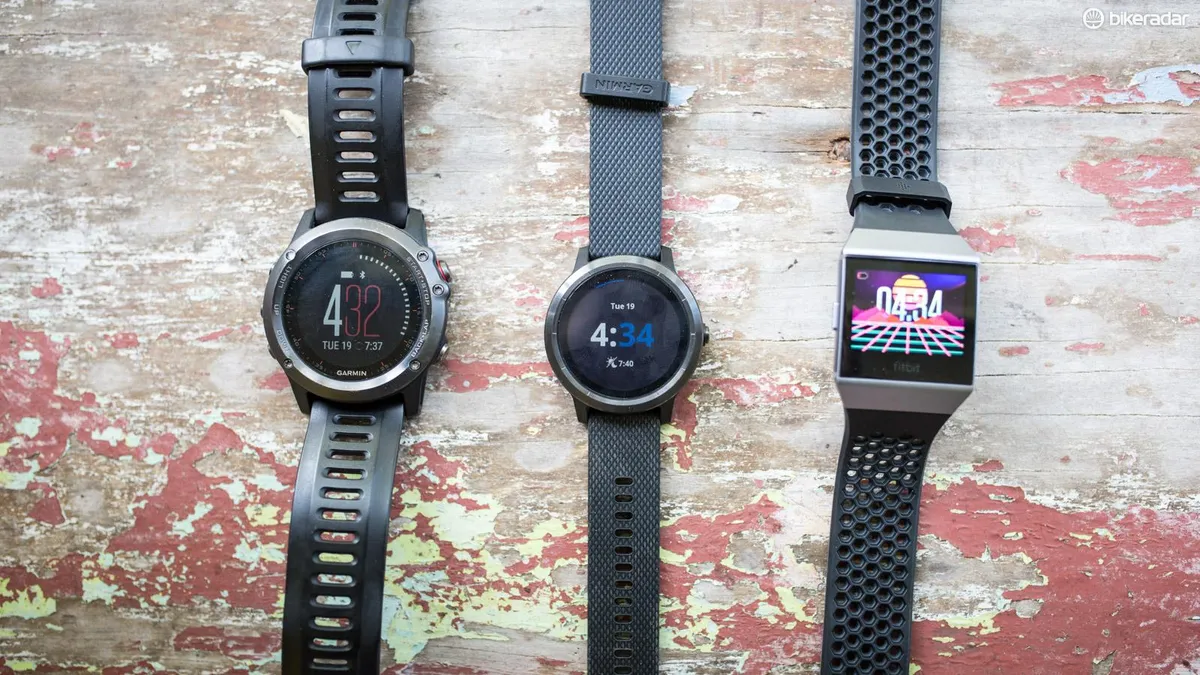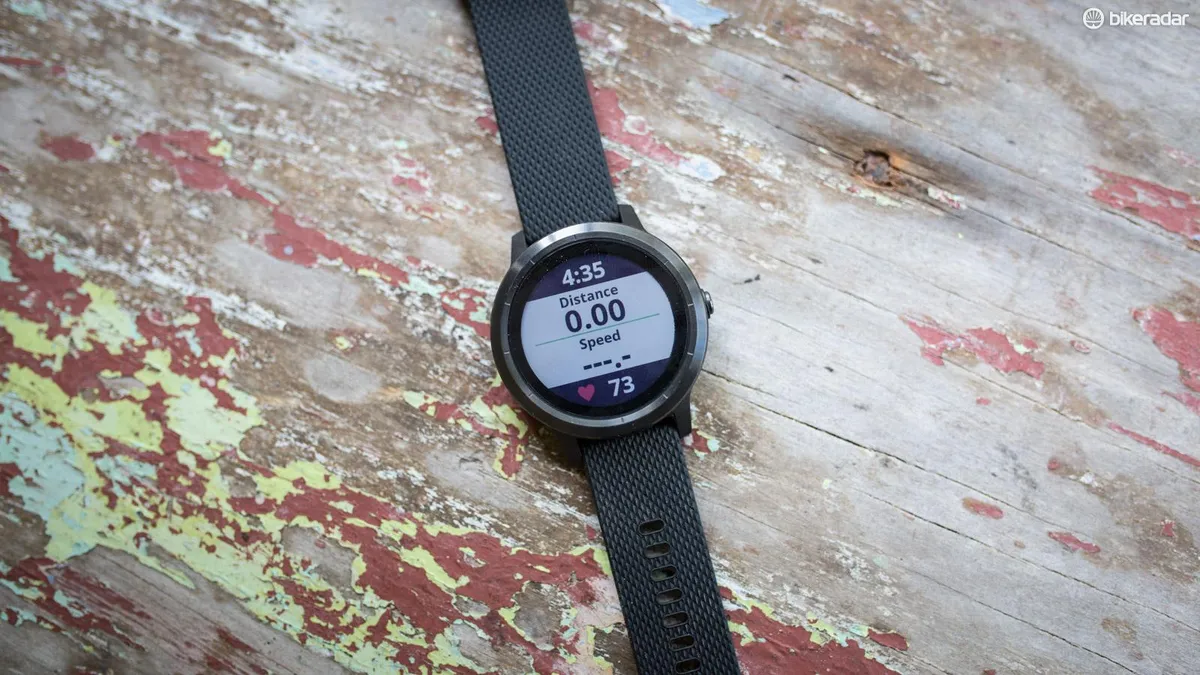Garmin’s Vivoactive 3 is the brand’s most fully featured activity tracker, and the smartwatch slots into the same category as the Apple Watch and Fitbit Ionic when it comes to features and price.
- Best cycling watch
- Fitbit Ionic smart watch review
- Wrist-based heart rate monitors vs. chest heart rate straps
Tipping our scales at 43g the Vivoactive 3 features a round touch screen and one button. The size factor is quite small, likely to please those with small wrists, however on me, it looked a bit like I was wearing a toy watch.
Given it’s a smartwatch, it’s no surprise the Vivoactive pairs to your phone and integrates with the Garmin Connect app. From the app, you can define which wrist you’ll be wearing the watch on, and which direction you’d like to have the button pointed.
Garmin Vivoactive 3 highlights
- Bluetooth and ANT+ connectivity
- Access to the Connect IQ store
- 13 hours battery life with GPS
- Optical HR
- GPS + GLONASS
- Touchscreen
This connectivity also allows access to the Connect IQ store for watch faces, apps, and data fields, and wireless uploads of activities to the watch can then automatically be pushed to third-party apps such as Strava and TrainingPeaks.
You can also customise settings on the watch through the app, such as displays on the controls menu. It’s a shame however that Garmin hasn’t taken this a step further by enabling other features aspects of the watch to be customised via your phone, such as data fields for particular activities, like you can with Wahoo's ecosystem.
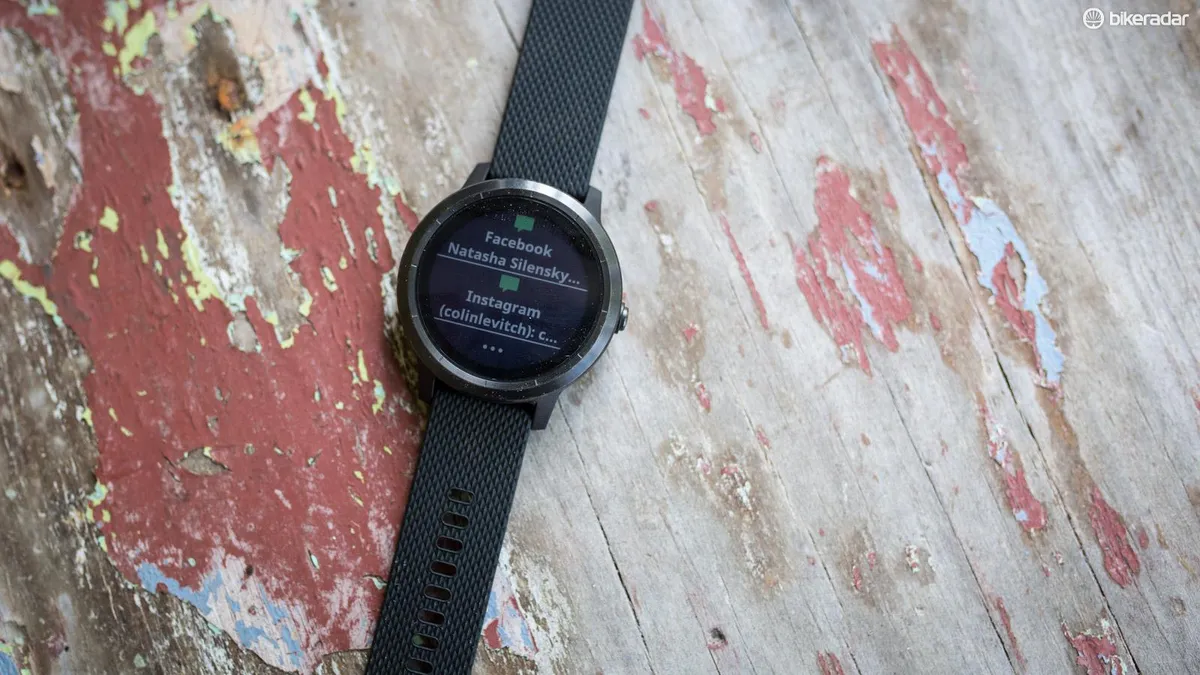
The app integration isn’t perfect, I tried to turn off notifications a million times because the watch was buzzing every time someone liked one of my tweets, commented on Instagram or sent me an email, and the watch continued to buzz.
The touchscreen is quite sensitive, although with full finger MTB gloves it’s a bit iffy, and with thick gloves on with the small screen it's a bit like trying to eat rice with chopsticks.
The side of the watch is also touch sensitive and allows you to swipe to change the screen you’re looking at. I can’t say I used this feature much, when I wanted to change the screen I’d just swipe the screen, but when I did use the side swipe it either wouldn't register or would flip to two screens.
Unlike many smartwatches in this category, the Vivoactive 3’s screen is always on. Given the annoyance the 'only on when you look at it' screen causes with the Apple Watch and the Fitbit Ionic, this was a much-appreciated feature.
Indoors the screen is not the easiest to read without the backlight. However, the backlight is like a floodlight and, even for being so small, lights up the better part of a dark room.
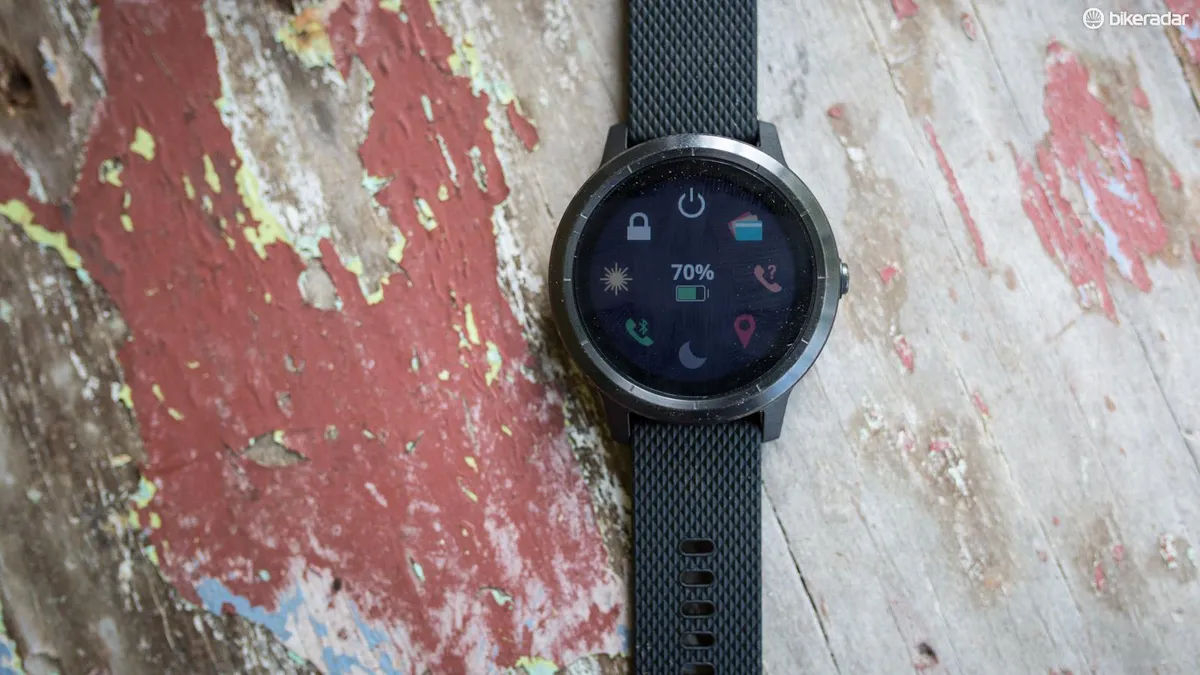
Also new for the Vivoactive is Garmin Pay. Unfortunately, however, neither my bank or any of my credit cards are supported. Garmin hasn’t got many financial institutions on board just yet, but neither have Fitbit or Apple in some territories.
Battery life is claimed at up to 13 hours in GPS mode and up to seven days in smartwatch mode. I was testing the Vivoactive 3 alongside the Fitbit Ionic, often wearing both devices at the same time on each wrist, and the Vivoactive outlasted the Fitbit every time.
Garmin Vivoactive 3 activity tracking
The Vivoactive 3 is positioned just below the more sport-centric watches in Garmin’s line up like the Fenix and Forerunner series, and so it’s no surprise to see a focus on steps, sleep tracking weather, flights of stairs, intensity minutes and the like.
There is also a new stress stat, which basically tells you how in numeric form your day is going.
With built-in GPS, GLONASS, barometric altimeter, compass, accelerometer, thermometer and Garmin’s Elevate wrist-based HR, the Vivoactive pulls well ahead of the majority of activity trackers.
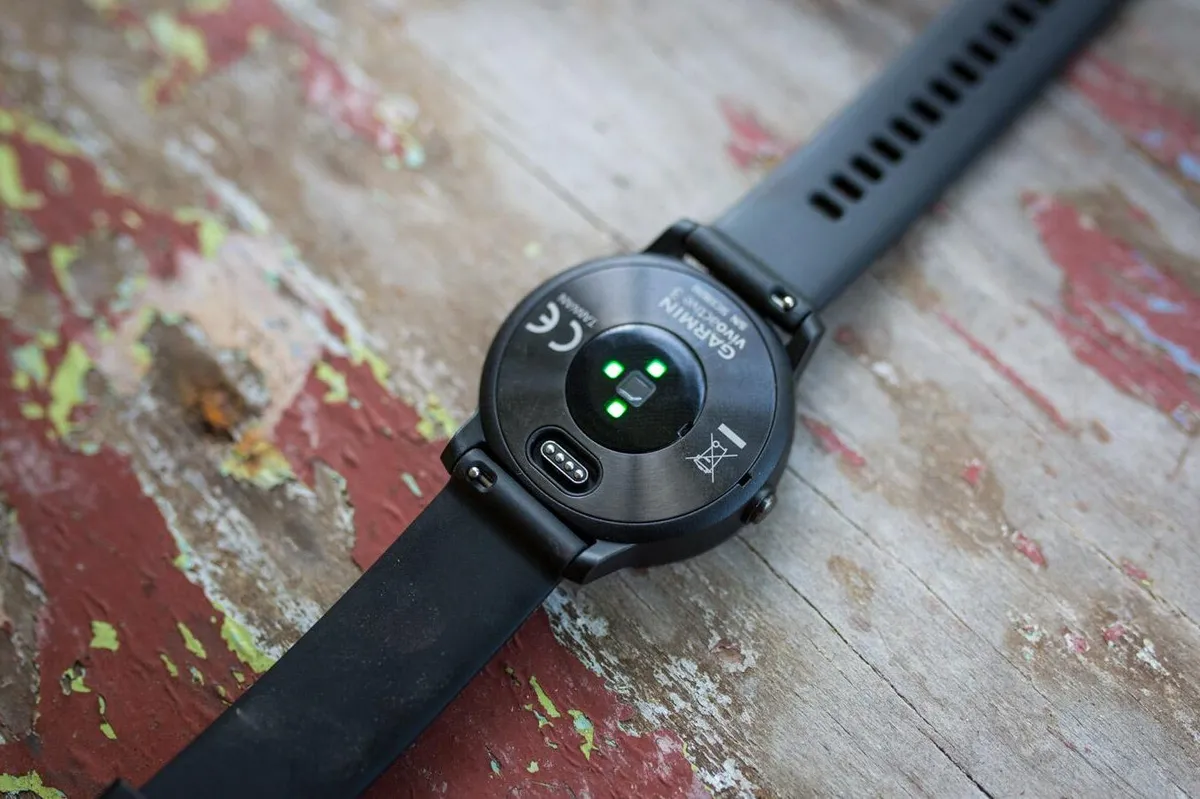
There’s also a million different activity modes to choose from, ranging from the default bike and run to strength, ski and even yoga. You can also create your own or download a pre-built app from the Connect IQ store. This is another aspect where Garmin has missed the boat on phone integration, and it’s a shame you can't define these from inside the app.
The watch can display up to three screens of four metrics plus an HR gauge. If you opt for the four field layout, the outside two are limited to just a timer, heart rate, calories, distance and time of day, while the inner two get the full spectrum of data fields — the three field layout also allows full customisability for each field.
As you’d expect, there are also options for auto pause, auto scroll, auto laps and manual laps.
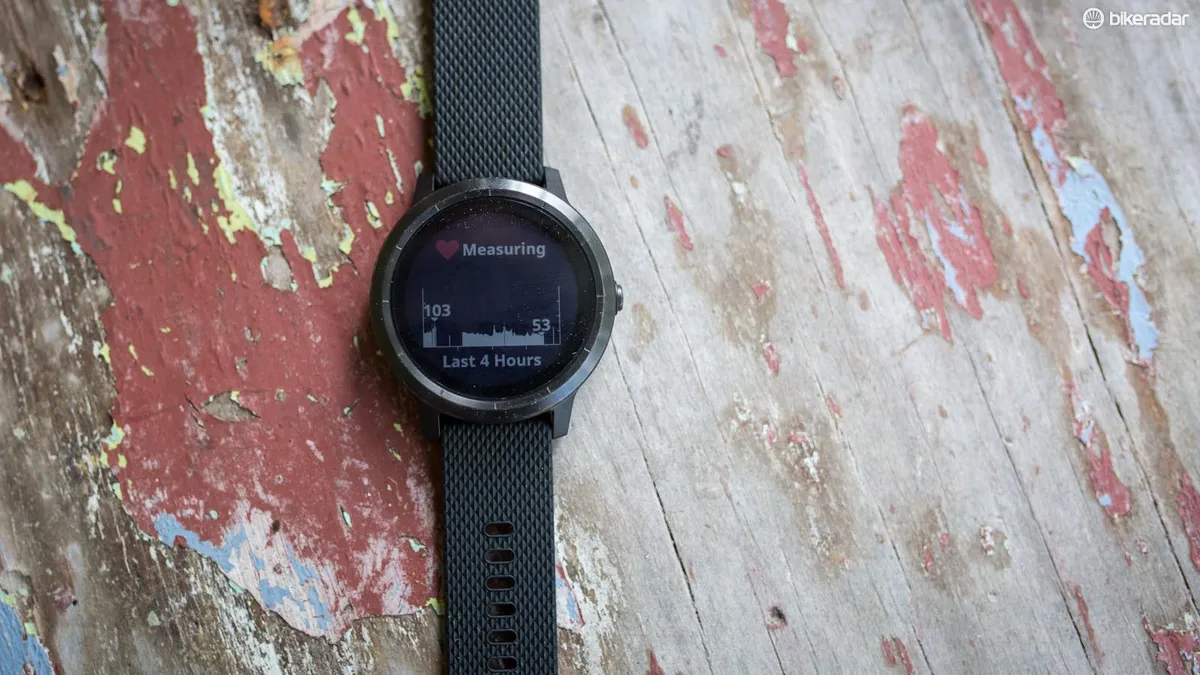
The watch can connect to both ANT+ and Bluetooth HR straps, and speed and cadence sensors, but it doesn’t natively support connections to power meters. However, there are data fields in the Connect IQ store that do allow the devices to communicate, although they also occasionally yield for some wonky readings.
Garmin Vivoactive 3 accuracy
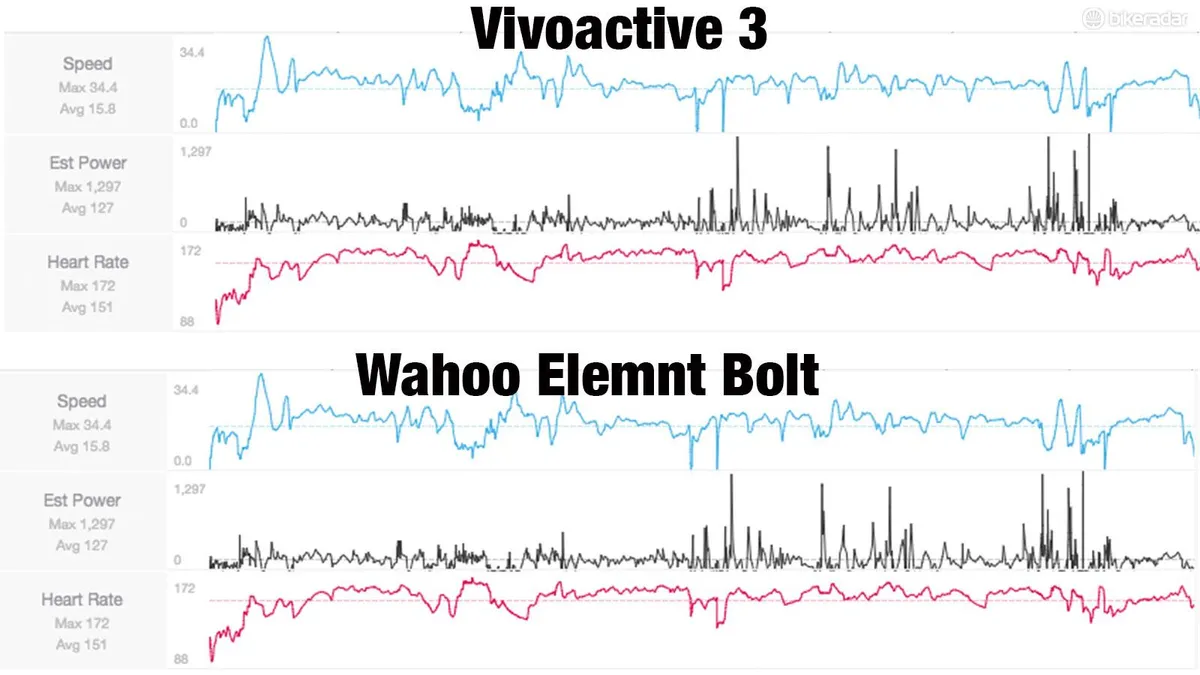
When it comes to the optical heart rate accuracy, the Vivoactive 3 offered up surprising results.
As usual I tested against a Garmin ANT+ heart rate strap paired to my Wahoo Elemnt Bolt head unit, and followed the best practice for wrist-based optical HR — worn above the wrist bone and tight but not too tight (just loose enough that you can stuff one finger between the band and your wrist, but not two).
As you can see on the graph above, on the road the Vivoactive tracked pretty much identical to the chest strap. I was so surprised how close the Vivoactive tracked I made this particular graph three separate times just to be sure I wasn’t accidentally putting the same file in twice.
Unfortunately, when it came to the trail the Vivoactive succumbed to the bumps quite drastically and really struggled to maintain a lock on my heart rate. To make sure this wasn’t a one-off I grabbed another MTB ride which proved to be a bit better, but still showed quite a difference in the result.
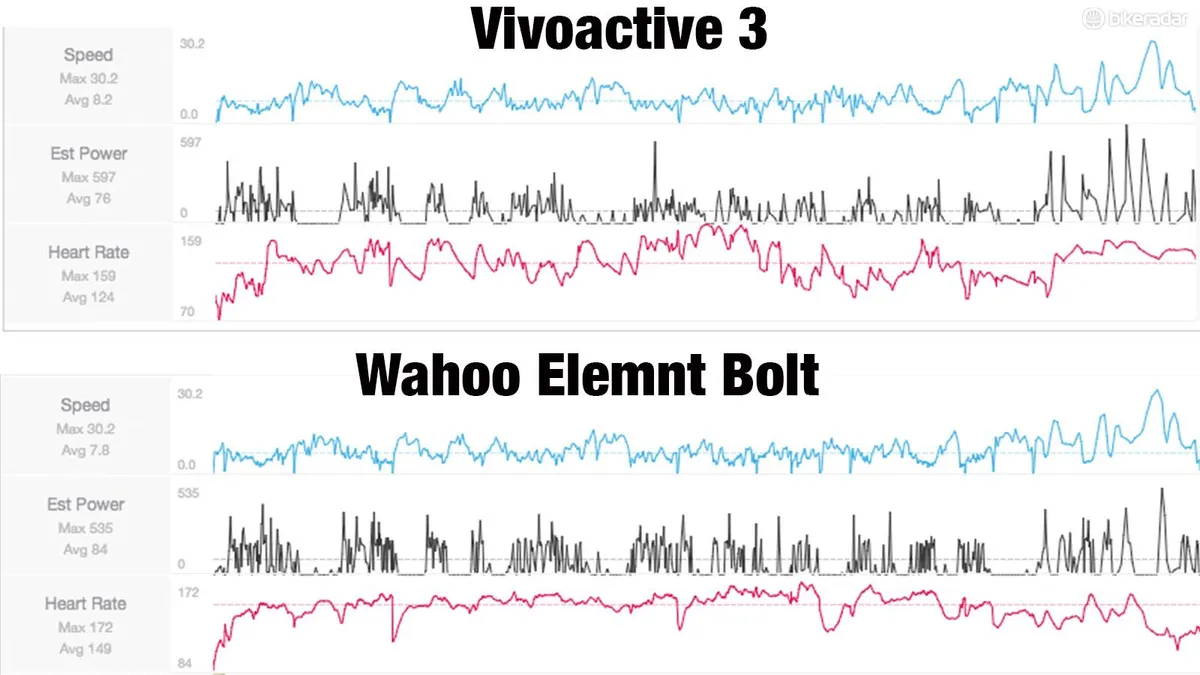
The GPS accuracy on the other hand is bang on, with the distances lining up to within .1 of a mile and average speed within 1mph. This was using the standard GPS setting, and with the GPS +GLONASS was even closer.
A feature I didn’t expect to find on an activity tracker of this level was the ability to download workouts and training plans from Garmin Connect and have the watch guide you through them.
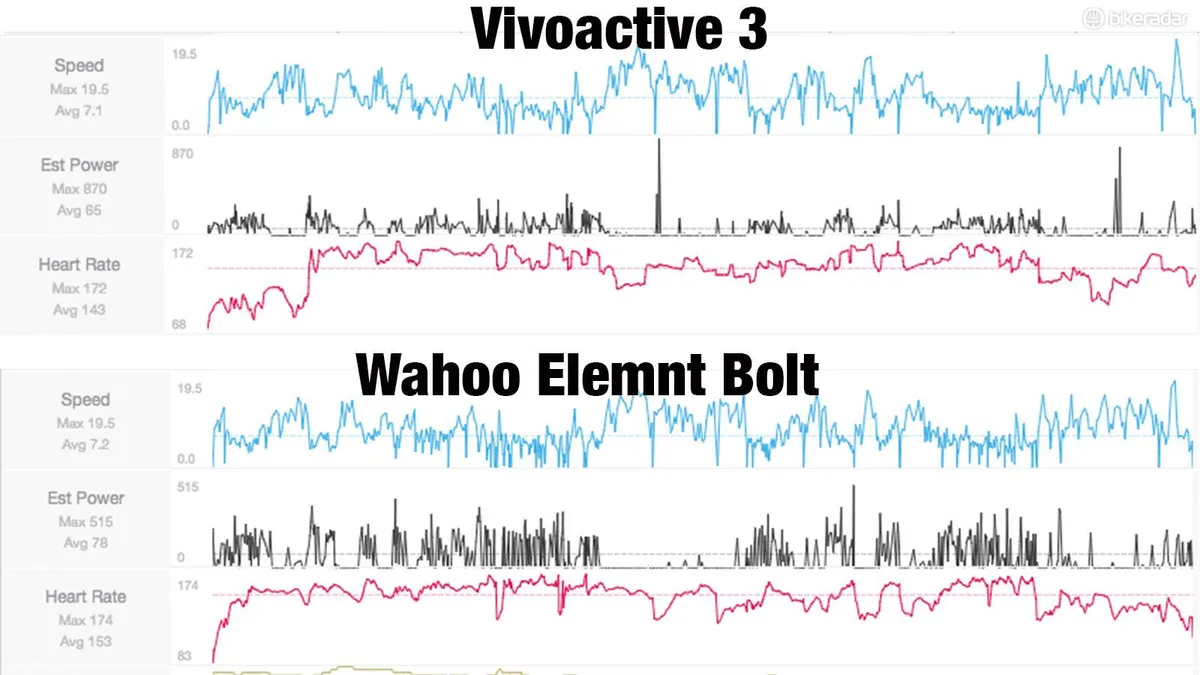
Garmin Vivoactive 3 overall impression
Overall, Garmin’s Vivoactive 3 is one of the best sport focused activity trackers I’ve tested to date. It doesn’t have certain ‘smart watchy’ features such as memory for music and the ability to connect to Bluetooth headphones — that offerings from Fitbit and Apple do — however, the optical heart rate proved more accurate and the range of built-in sensors more than make up for this fact.
It has the typical Garmin quirks such as the notifications, and the app integration could be better, but at this point the Vivoactive is really only limited by its firmware. It’s got all the internal sensors that the more expensive watches do, it just needs to be told how to use them.

